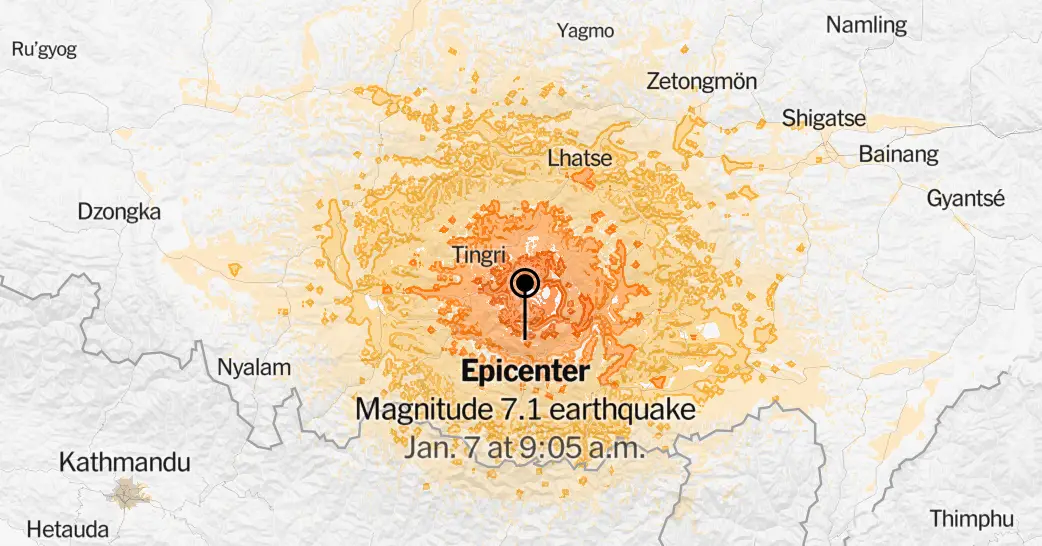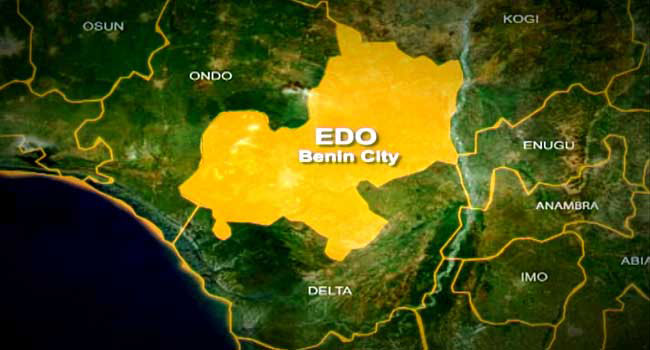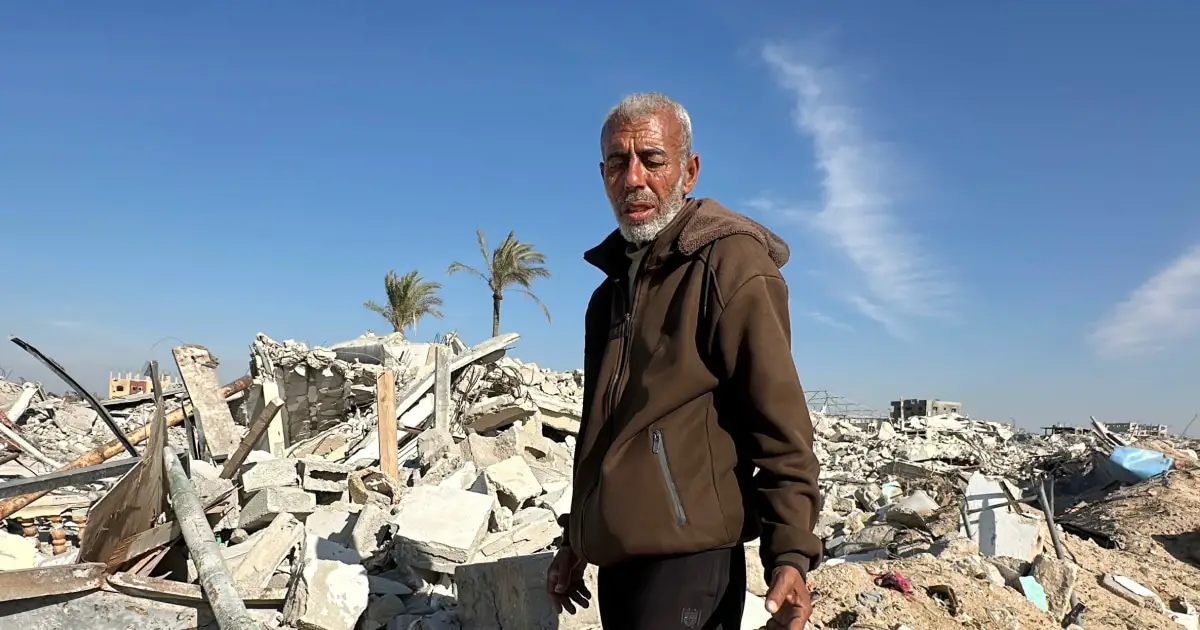
[ad_1]
Dozens of people were killed and hundreds of buildings were toppled after a 7.1-magnitude earthquake struck a region near one of Tibet’s holiest cities, close to the Himalayan border with Nepal on Tuesday. Tremors were felt in Nepal.
The quake struck shortly after 9 a.m. at a depth of 6.2 miles in Dingri County in Tibet, Chinese state media reported. They said at least 95 people had died and 130 were injured. Xinhua, the official news agency, published video of police removing rubble and lifting debris.
China’s state broadcaster reported that more than 1,000 houses had collapsed in Dingri County, which sits on the northern foothills of Mount Everest.
Several aftershocks were felt in the area, including in Nepal. The quake had a magnitude of 7.1, according to the United States Geological Survey, though it was measured as 6.8 by the China Earthquake Networks Center.
The nearest city to the earthquake’s epicenter was Shigatse, the second-largest city in Tibet, with a population of 640,000. Shigatse is regarded as a holy site as the seat of the Panchen Lama, one of the most senior figures in Tibetan Buddhism.
A tourist not far from Shigatse who spoke to The Times said she was in her hotel room when the earthquake started shaking her building. She said the electricity went out and that she and a friend squatted between the beds. When the shaking stopped, they ran out of the building.
The tourist, who only gave her surname, Xu, shared a video showing several single-story brick buildings with collapsed walls.
Video posted on Chinese social media showed streets strewed with rubble, cars crushed by fallen bricks, and roads split open by the shifted ground. Ms. Xu said that she grabbed her down jacket before she ran out.
China’s top leader, Xi Jinping, ordered officials to minimize casualties and resettle survivors. The Chinese authorities deployed 1,500 rescuers and more than 250 vehicles for the search effort, which was taking place in frigid conditions, with temperatures dipping as low as 5 degrees Fahrenheit (minus 15 degrees Celsius). In photos published by state media, rescuers appeared to be digging through piles of rubble from toppled houses using ropes, shovels and working by hand.
The Himalayan region is prone to powerful earthquakes. In 2015, a quake in Nepal with a magnitude of 7.8 killed nearly 9,000 people. In Kathmandu, Nepal’s capital, residents streamed out of their homes in the morning as the earthquake rattled buildings.
At least two people, one in Kathmandu and another one in Sindhupalchowk, a district north of Kathmandu, sustained minor injuries from the quake, according to Nepalese police.
Nepal sent more than 2,500 police officers to assess damage and look for victims.
“Based on the magnitude of the earthquake, there could be some damages in mountains of eastern Nepal,” said Lok Bijaya Adhikari, a senior seismologist at Nepal’s National Earthquake Monitoring and Research Center.
Most residents from Nepal’s high mountain regions such as Everest, Makalu, Rolwaling and Kanchenjunga have migrated to lowland areas to avoid the extreme cold of winter.
“Although most people migrate to lower land during winter season, some are still there,” said Ang Tshering Sherpa, the former chief of the Nepal Mountaineering Association. “There’s always risk of avalanche and glacial lake outburst floods after earthquakes.”
Berry Wang contributed reporting.
[ad_2]
Source link





